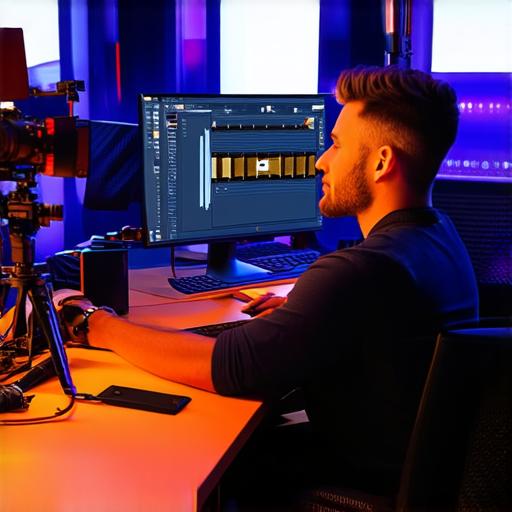The Unreal Engine is a software tool commonly used for creating 3D graphics, including in-game environments, virtual reality experiences, and motion capture animations. While the engine has been widely used in the gaming industry, it has also found applications in other areas such as film and television. In this article, we will explore the use of the Unreal Engine in film production and its potential impact on the industry.
The Unreal Engine in Film Production
The first use of the Unreal Engine in film production was in 2014 when it was used to create a virtual set for the TV show “Westworld.” Since then, the engine has been used in various productions such as “The Matrix Reloaded,” “The Wolf of Wall Street,” and “Jumanji: The Next Level.”
Benefits
One of the main benefits of using the Unreal Engine in film production is its ability to create highly detailed and realistic environments. The engine’s advanced physics simulation capabilities allow for complex visual effects such as particle systems, fluids, and soft bodies, which can be difficult or impossible to achieve with traditional 2D animation techniques.

Another advantage of the Unreal Engine in film production is its flexibility. It can be used to create a wide range of environments from futuristic cities to ancient ruins, allowing filmmakers to create visually stunning scenes without having to rely on practical effects.
In addition, the engine allows for real-time rendering, which means that changes made to the environment or characters can be seen immediately, making it easier to iterate and refine the final product. This also makes it possible to shoot in 360 degrees, providing a more immersive viewing experience for audiences.
Challenges
While the Unreal Engine has numerous benefits, there are also challenges associated with using it in film production. One of the main challenges is the steep learning curve required to use the software effectively. The engine requires specialized skills and knowledge, which can limit its accessibility to smaller productions or those with limited budgets.
Another challenge is the high cost of licensing the Unreal Engine. The software can be expensive, making it difficult for some filmmakers to justify the investment without knowing whether it will provide a significant return on their investment.
Future of the Unreal Engine in Film Production
Despite the challenges associated with using the Unreal Engine in film production, there is no doubt that its use will continue to grow in the future. The engine’s ability to create highly detailed and realistic environments, combined with its flexibility and real-time rendering capabilities, make it a powerful tool for filmmakers looking to push the boundaries of what is possible in visual effects.
As the technology advances, we can expect to see more productions utilizing the Unreal Engine, and we may even start seeing films that are entirely created using this software. The future of the Unreal Engine in film production looks bright, and its potential impact on the industry will continue to grow as it becomes more accessible and affordable for smaller productions.
Summary
The use of the Unreal Engine in film production is still relatively new, but it has already shown significant potential for creating highly detailed and realistic environments that are difficult or impossible to achieve with traditional 2D animation techniques. While there are challenges associated with using the engine, its benefits make it a powerful tool for filmmakers looking to push the boundaries of what is possible in visual effects. As technology continues to advance, we can expect to see more productions utilizing the Unreal Engine and its potential impact on the industry will continue to grow.
